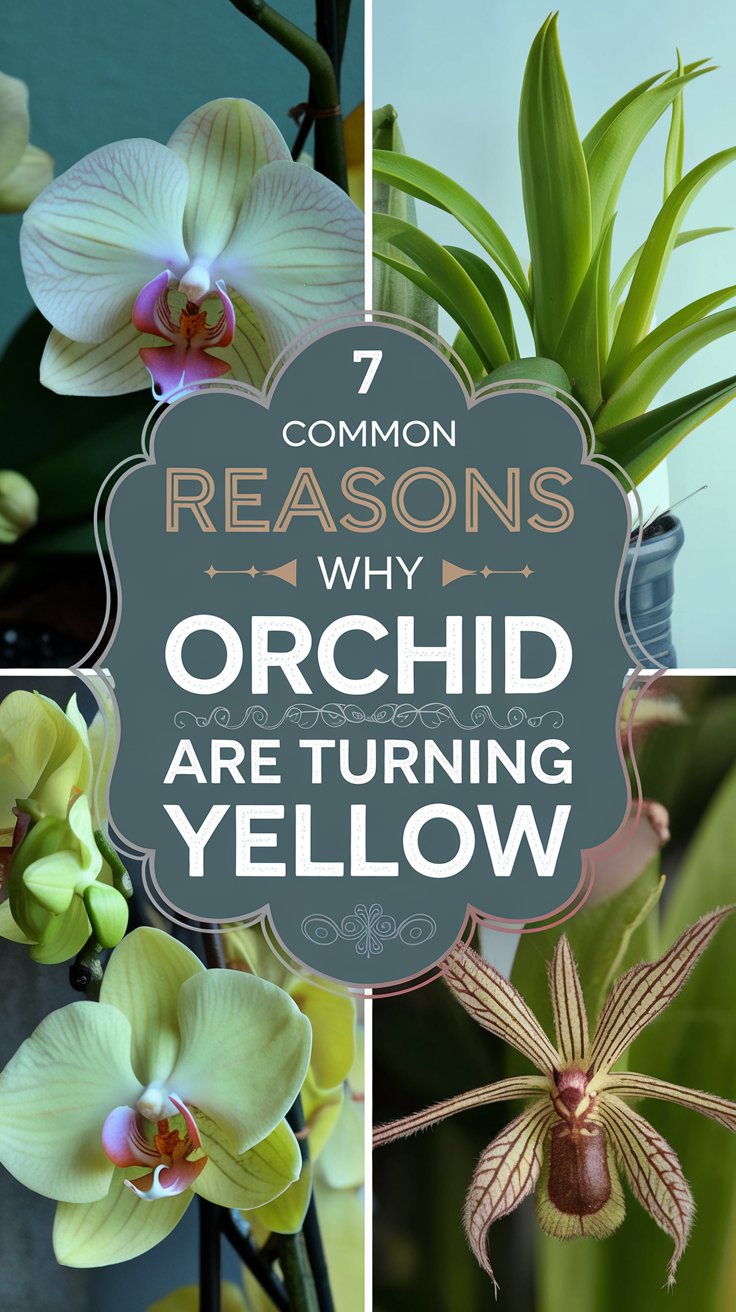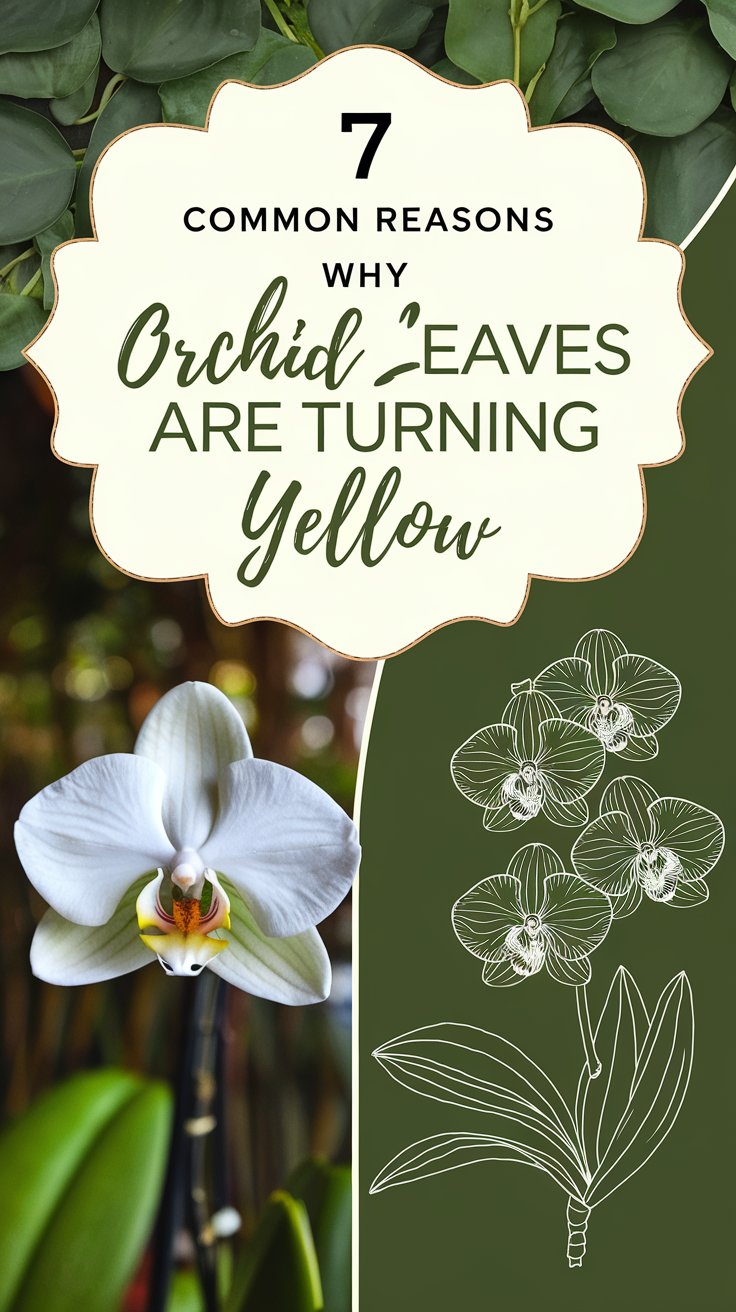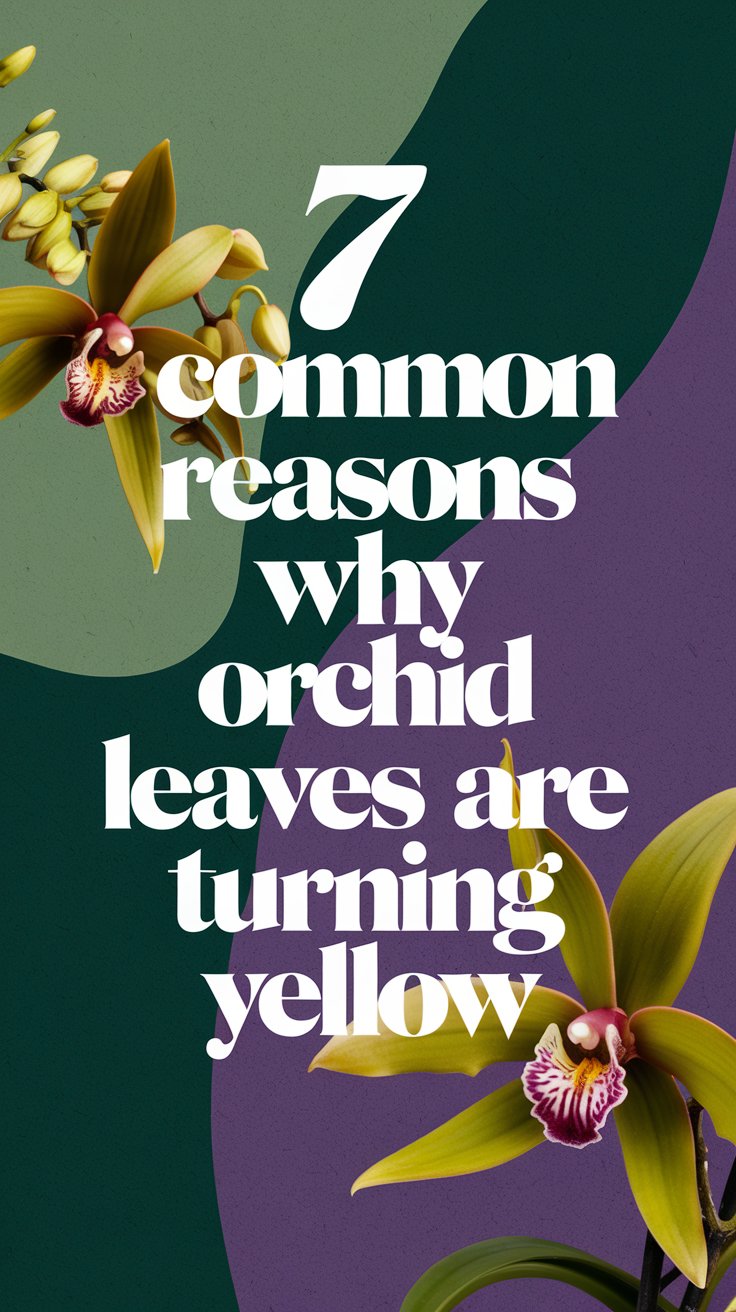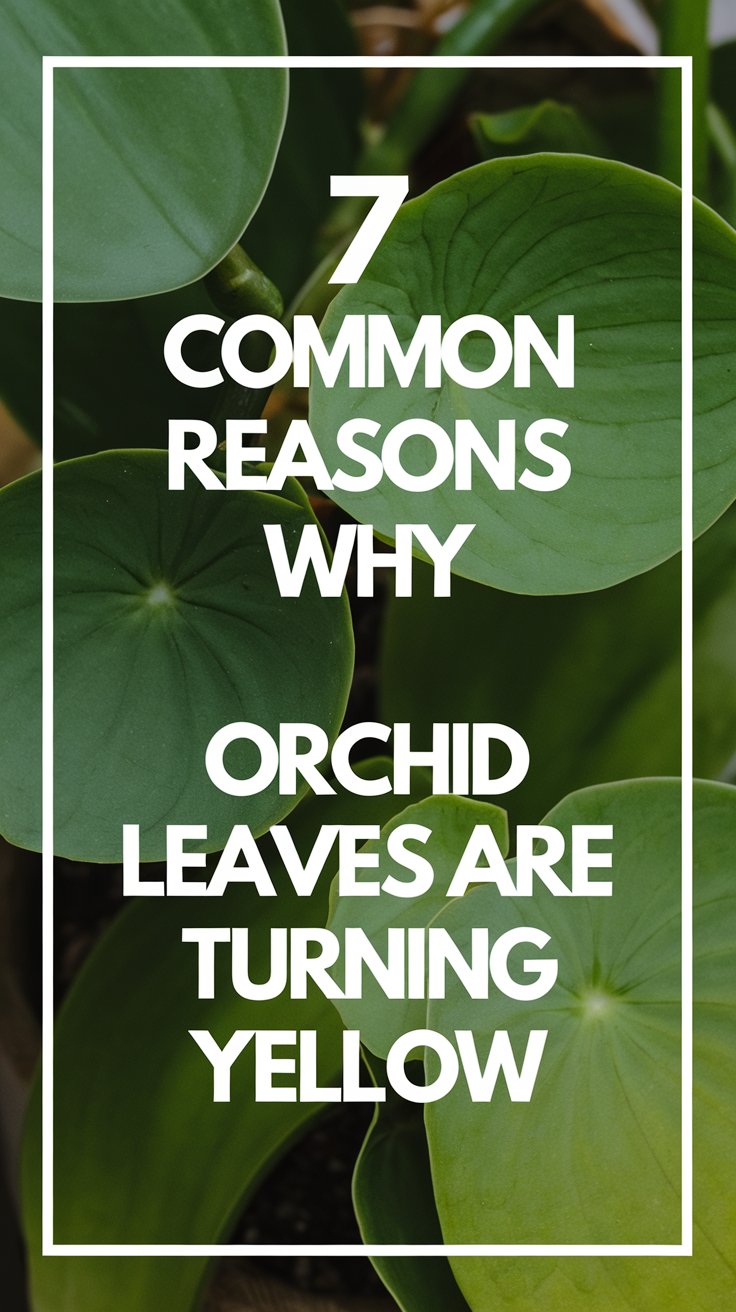Understanding the reasons behind yellowing leaves can help you restore your orchid to health. In this article, we’ll explore seven common reasons why orchid leaves may change color and what you can do to fix the issues.
Overwatering
One of the most common reasons for yellowing leaves in orchids is overwatering. Orchids thrive in well-draining media, and excess water can lead to root rot, which in turn affects the health of the leaves. Make sure your potting material allows for proper drainage, and always check that the top inch of the media feels dry before you water again. This practice can help you avoid the pitfalls of overwatering.
Underwatering
Surprisingly, underwatering can also lead to yellowing leaves. If the leaves of your orchid are wrinkling or changing color, it might be time to reassess your watering routine. Always check the moisture level of the media before deciding to water; finding the right balance is crucial to keeping your orchid healthy and vibrant.
Nutrient Deficiencies
Orchids require a balanced diet of nutrients to flourish. A deficiency, particularly in nitrogen, can manifest as yellow leaves. To combat this, consider using a balanced orchid fertilizer every few weeks during the growing season. This can help replenish the necessary nutrients and support your plant’s health.
Insufficient Light
Light plays a critical role in the well-being of orchids. These plants generally prefer bright, indirect light, and insufficient lighting can cause the leaves to yellow as a stress response. If you notice your orchid is not thriving, consider relocating it to a brighter location, while being careful to avoid direct sunlight that can scorch the leaves.
Pests and Diseases
It’s essential to keep an eye out for pests and diseases, as they can stress your orchid and lead to yellowing leaves. Look for signs of common pests, such as aphids or scale. Additionally, fungal infections may also pose a threat. If you spot any pests, treat your orchid promptly with insecticidal soap or a suitable pesticide to safeguard its health.
Temperature Stress
Orchids can be quite particular about their environmental conditions, and extreme temperatures—whether too hot or too cold—can cause yellow leaves. Make sure your orchid is kept in an environment that maintains its preferred temperature range of 65-75°F (18-24°C) during the day. A stable temperature can help prevent stress and keep your plant looking its best.
Natural Aging
Lastly, it’s important to recognize that older leaves will naturally yellow and eventually drop as part of the plant’s growth cycle. If you notice yellowing only on the lower leaves and it isn’t accompanied by other troubling symptoms, this is likely just the plant’s natural aging process. In such cases, there’s often no need for concern, as it’s a normal aspect of orchid growth.
Conclusion
By addressing factors such as watering, lighting, and nutrition, you can help your orchids thrive again!









